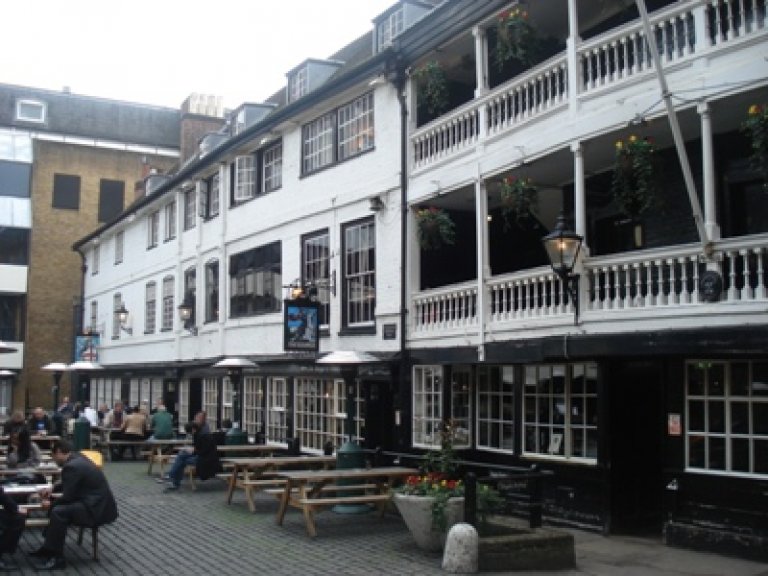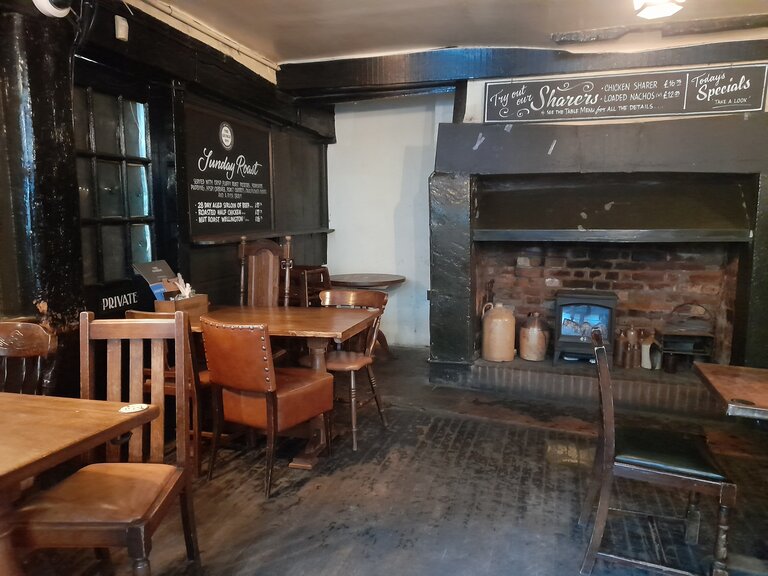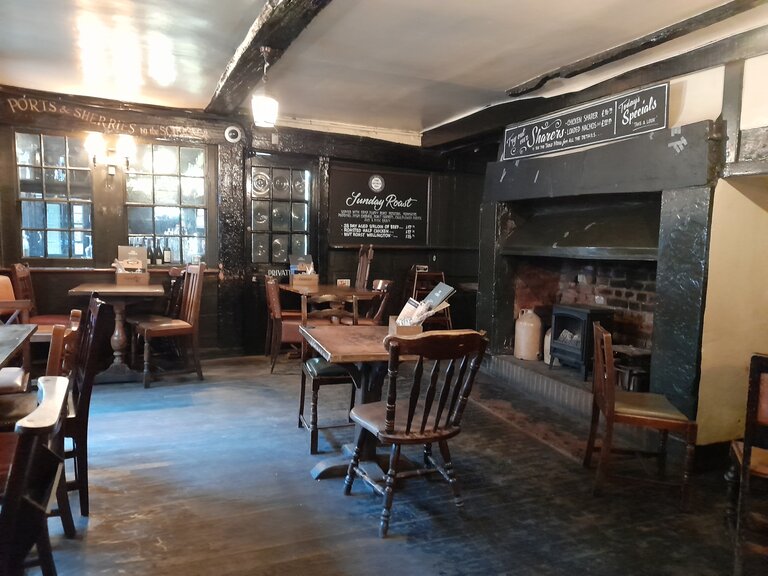George
77 Borough High StreetSouthwark
SE1 1NH
This pub is not only a grade I listed building, it is also a Three Star pub on the Campaign for Real Ale’s (CAMRA) National Inventory with an interior of outstanding national historic importance, and the description is as follows: "An amazing survivor from the days when Southwark was a major terminus for the coaching trade between London and southern England. The George was rebuilt in 1676 after a major fire in Southwark and is the last galleried coaching inn in London – but even this is but a fragment of its former self. It used to extend round the four sides of a courtyard – just as the New Inn in Gloucester does to this day. Part of it was demolished in 1889 to make way for the construction of railway warehousing. The galleries gave access to the first and second floor rooms have plain, white-painted balusters. The upstairs rooms are panelled and are particularly fine. Most of the pub’s spaces involve modern fittings but the first bar you come to has some of the oldest woodwork purpose-fitted for a pub anywhere (some of it might even date back to the rebuilding of the inn). The two fireplaces suggest it was two rooms at one time but they have been amalgamated.
The larger part of this room has a mighty fireplace and a glazed-in servery with vertical sashes. Inside you can see a now disused set of ‘cash-register’-style Victorian handpumps (the handles move in quadrant-shaped slots to draw the beer) - they are reported as still being in use in the 1970s. The maker’s name – South of Blackfriars Road – is prominent. A working set in daily use is at the Old Crown, Kelston, Somerset;
In the part nearest the road is full-height horizontal boarding; simple fixed seating against the walls and in the window; and an ancient fireplace with a wooden hood. The tap room houses a 'Parliament clock' - in 1797 a tax of five shillings was levied on people who possessed a watch or clock. Not surprisingly many disposed of their timepieces and relied on clocks in public places. The one at the George was one such. The pub is owned and leased out by the National Trust which acquired it in 1937."
The listing description is as follows: "Inn. C17. Timber-frame and brick. Tiled roof. Present structure formed the south range of a coaching inn ranged around a quadrangle. EXTERIOR: 3 storeys with dormers. The west half has 2 tiers of galleries at the 1st and 2nd floors, the lower supported on cantilevered beams and the upper on wooden Doric columns. The wall behind is partly brick and partly timber. There are windows overlooking the gallery and a staircase at the eastern end. The eastern section, with a 9-window range, is chiefly of limewashed bricks with storey bands. A variety of glazing patterns, including flush C18 sashes, sliding sashes, casements and windows with mullions and transoms. Boxed eaves to the brick range; the galleried section terminates in a 4-part fascia. The rear or south is reported to be brick faced and features a large projecting stack. The windows here appear to be the remnants of an earlier phase of construction. INTERIOR: early C18 staircase, reset as dogleg staircase c1730, has barleytwist-on-vase and column-on-vase balusters on closed string with moulded handrail and heavy barleysugar newel post. Ground-floor room to front right with fielded panelling, moulded dado and cornice and bolection-moulded overmantel over fire-place; simpler panelled room with straight-cut panelling and moulded cornice to rear right; similar panelled room with cupboard adjoining early C19 marble fireplace to front left; similar panelling to three 1st-floor rooms, with early C19 fireplace to front left. Attic has C18 common-rafter roof, with halved collars; C17 plank door to cellar, which has reused medieval beams and squared stonework of possible medieval origins to left side wall. HISTORICAL NOTE: the original inn dates back at least to the C16. In addition to its functions as a coaching inn, part of it came to be used as offices for the Great Eastern Railway Company, which eventually acquired the entire site from Guy's Hospital. The north range was pulled down by the Company in 1874. In 1937 it was given to its present owner, the National Trust. (The Buildings of England: Cherry B: London 2: South: England:"
The WhatPub link is here: WhatPub/George
The Pub heritage Group link is here: PHG/George
The George featured on the Evening Crawl of Southwark on 2 August 2004, and the Evening Crawl of Southwark on 1 August 2005.
 Exterior
Exterior
 Parliament Bar
Parliament Bar
 Parliament Bar
Parliament Bar
